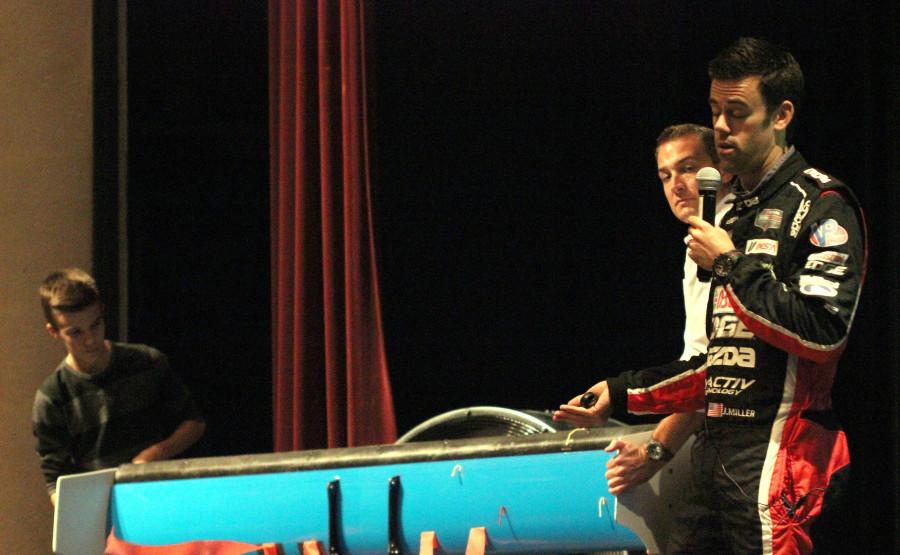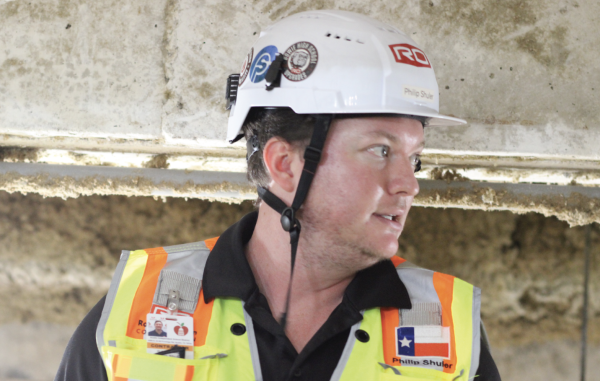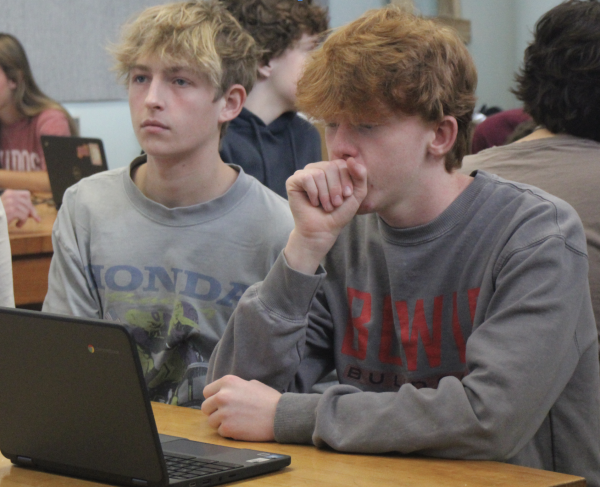F1 ‘STEMS’s into school curriculum
Guess who: Mazda race car driver Joel Miller explains to students some of the high tech advancements that are present on the cars use in F1 racing. Students were treated to a small suprise at the beginning of the presentation when assitant principal Larry Britton got out of one of the cars wearing a full racing outfit. Photo by Fuaad Ajaz
Polished, hard steel atop with a satin red coat, the SKYACTIV-D beckoned a curious crowd, along with racing fanatics alike.
With the goal of introducing a few aspiring engineers to the world of race cars, Mazda brought its ‘Racing Accelerates Creative Education’ program to campus.
Through an hour long demonstration a team from Mazda presented the field of motorcar racing along with the physics behind pushing speeds in the triple digits.
“Personally, if we inspire the kids and show them there is more than the mechanic and the driver then we’ve done our job,” race car driver and presenter Joel Miller said. “If we get a few racing fans in the process, well.”
Several students crowded around the presenters to get autographs and pictures taken.
Mazda’s STEM (Science Technology Engineering and Math) programs acts as an outreach for schools and arranges a demonstration for nearly every event they race at.
“Essentially, they are looking to the future and are realizing that for them to stay in business they’ve got to have engineers and not just engineers, there’s a whole bunch of other career fields that are associated with the sport and automotive industry,” science teacher, Jill Harding said.
The team showcased its’ clean diesel prototype race car, which costs in the millions as the engine alone can cost more than the average Sudan, by demonstrating how much force the car has to have pushing down on it so that it doesn’t fly off the ground. For example, the race car could drive upside down if it matched speeds of up to 150 mph.
The crew also explained the vehicle’s use of synthetic diesel made from domestic cooking oils and french fry oils from restaurants.
The team’s idea is that by using diesel made from reusable sources, rather than gasoline, they will be making less pit stops and hopefully, more wins.
“They are trying to see the ‘big picture’ in a green way,” Harding said.
The presenters came to campus on September 16 and then to Akins High school on September 17, before racing in the Lone Star Le Mans race, Circuit of Americas on September 19 and 20. Students who attended the presentation were given a free ticket to attend the event, in which the two cars sported stickers from each school.
“It was so insightful about the racing business, and it gave me a new look of what goes on,” freshman Joshua Rocha said.
The presenters also touched on the nutrition and fitness regime of the drivers, as well as the computers that are used to simulate the design of the cars and their performance, since Mazda has stepped away from track testing.
“You really got to see how math, engineering, and science went into building a race car,” Rocha said.
The auditorium was packed with full house of about 500 students and received a surprise during the showcase when assistant principal Lawrence Britton, disguised himself behind a helmet and suit, pretending to be one of the race car drivers.
“They are trying to get students excited about what’s out there, it’s a high interest field where students have a lot of passion for cars and the automotive industry,” Harding said. “They may not have thought, wow, there’s more than just engineers and scientists, there’s nutritionists, medical doctors, and fitness experts.”
The drivers have a seat that is molded specifically for them as well as wearing a helmet and a fire-retardant suit, like the one Miller was wearing during the presentation. Drivers, like Miller, have to be equipped with more than just lighting reflexes and sheer boldness, he also doubles as an engineer major.
“I think it just opens up their eyes to the possibilities out there, we tend to get so focused on what we think a scientist looks like and we don’t realize the need for them,” Harding said.
The team raced that weekend with a full audience inspired students and fans. While they didn’t place first their movement towards a greener substitution for gas and introducing new minds to the field made an obvious effect on campus.
Your donation will support the student journalists of James Bowie High School. Your contribution will help cover our annual website hosting costs. Any contributions made through this service are NOT tax deductible. If you would like to make a tax deductible donation OR to subscribe to our print edition, please contact us at [email protected].







